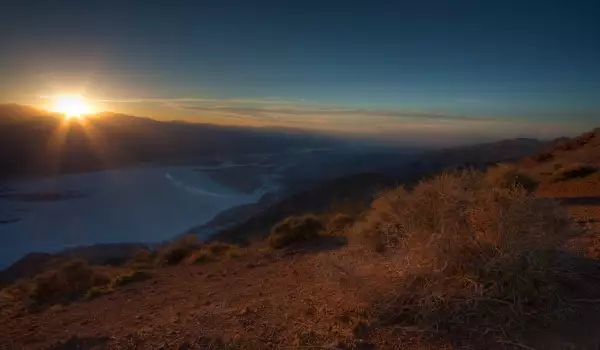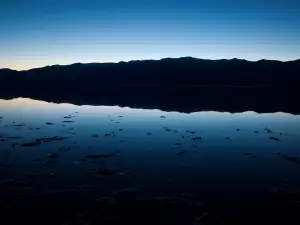Death Valley National Park

Death Valley National Park is the driest of the U.S. National Parks and is located in California.
The park extends over an area of fourteen thousand square meters, including almost all of Death Valley and the territories of several mountain systems.
Many years ago, in mid-nineteenth century, this place was used for the extraction of gold. The first Americans who were not natives of the country, built on that land in 1849 to save time, as far as the gold mines of California being closer. One of the groups died, so the place became known as Death Valley. There is a legend about a woman who walked alongside men, turned and said, "Goodbye, Death Valley ...". Thus, the valley received its name.
Many prospectors tried to find gold in Death Valley, but only managed to find ore to produce soap. Death Valley was declared a national monument in 1933. In 1994 the status of the Death Valley was changed and it became a national park.

This park is the second point of ground depth in the western hemisphere - it is located eighty-six meters below sea level and is known as Badwater. The name this place received from the pioneers who first set foot on this ground. They walked many miles, until finding the water, but it turned out that this water is not for drinking. This is due to the fact that the water contains chlorides, sulfates and salts of sodium.
Many tourists who arrive in California, do not go to Death Valley because they have a bias that they will fall on the desert landscape.
Death Valley is the hottest point of the Western Hemisphere, temperatures here reach forty-nine degrees C, so it is suitable to visit only during winter and early spring. The highest temperature detected here was over fifty-six degrees C.
Death Valley is not a desert. There are many types of reptilians, birds and mammals that have adapted to life in the desert. Many of them are active at night and sleep during the day to escape the heat.
In Death Valley is an abundance of plants and animals found nowhere else on the planet. In Death Valley an Indian tribe lives, which develops business and tourism deals with cattle and agriculture.
Each year in Death Valley flock around eight hundred thousand tourists from around the world. Among the sand dunes is a real surprise to see the medieval Scotty's Castle, which was built here in 1922 at the whim of a millionaire from Chicago.
One of the biggest attractions of Death Valley are the moving stones, also known as dancing rocks which themselves move along the bottom of the dried up lake, leaving behind many traces.
As yet no explanation was found for this unique phenomenon. There is a theory that the strong wind is able to move the stones, but this has not yet been proven.
Another interesting place in Death Valley is the crater Ubehebe, which is more than a thousand years old and was formed by a volcano.
In Death Valley there are ghost towns - these are the places where prospectors lived and were then abandoned. One of the most visited places in the Valley of Death is called Artist's palette.
On the rocks were formed salts of various metals, which seemed to blend into one another, forming a true pageant of colors.















